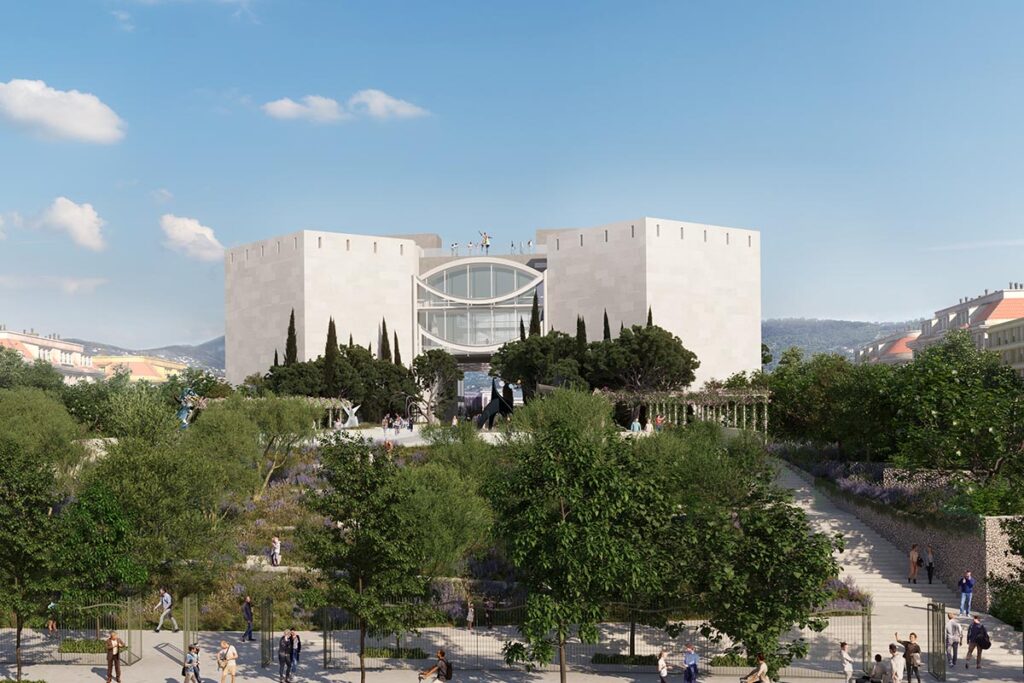
All Rights Reserved © Ville de Nice / Carrilho da Graça Arquitectos / Alexandre Chemetoff & associés / Ingerop / Mazet / Canopée / Les éclaireurs / Scenevolution.
Promenade du Paillon, season 2: a major component of the city’s climate security plan.
The implementation of the Promenade du Paillon season 2 is a major component of the climate security plan of the city of Nice. With its 8 hectares of additional green spaces in the heart of the city, the project allows for adapting urban spaces to combat heat islands and increase permeability of the ground during episodes of heavy rain.
Measurements campaigns between mineralized spaces and green spaces, carried out in the summer of 2022, allowed to record significant temperature differences (e.g.: 25.6°C on the ground on the Promenade du Paillon versus 50.6°C on the Delattre de Tassigny esplanade), demonstrating the concrete effects of greening in cities.
The removal of buildings that create “canyon streets” prone to the concentration of pollutants, and the planting of this new urban forest, will produce a temperature contrast with the rest of the city and generate refreshing thermal breezes, thus helping to combat heat waves which are likely to intensify in the coming years.
The creation of green spaces to have a positive impact on the living environment
These are places that are sought after by families, as demonstrated once again by the inauguration of the St Jean d’Angely garden a few weeks ago, which is now completely adopted today.
They effectively protect health by promoting the reduction of the number of cardiovascular diseases.
Moreover, the Promenade du Paillon season 2 will prevent the emission of 1740 tons of CO2 per year and strengthen the biodiversity of our territory through the creation of new soils.
In a highly competitive national and international context where demand is often greater than the available supply, the city of Nice has decided to create a market for nursery owners to ensure availability, quality, homogeneity, and price of the selected trees, thereby securing the project throughout its development.
In total, more than 1,500 trees will be planted, in extension of the Promenade du Paillon, with multiple species that fully comply with the ecosystem criteria of our tree charter: Eucalyptus, Gleditsia, Jacaranda, Magnolia, Paulownia, Pine, Oak, etc. This charter, included in all urban planning documents, takes into account species and varieties that are low water consumers, capture the most CO2, and combat urban heat islands.
This large number is explained by the uniqueness of the project and the extension of vegetation beyond the park, to the facades of buildings on either side of the garden.
At this stage, the challenge is to select the most beautiful specimens and the best species by experts.
After the necessary development phases, the first plantings are scheduled for next year.

















